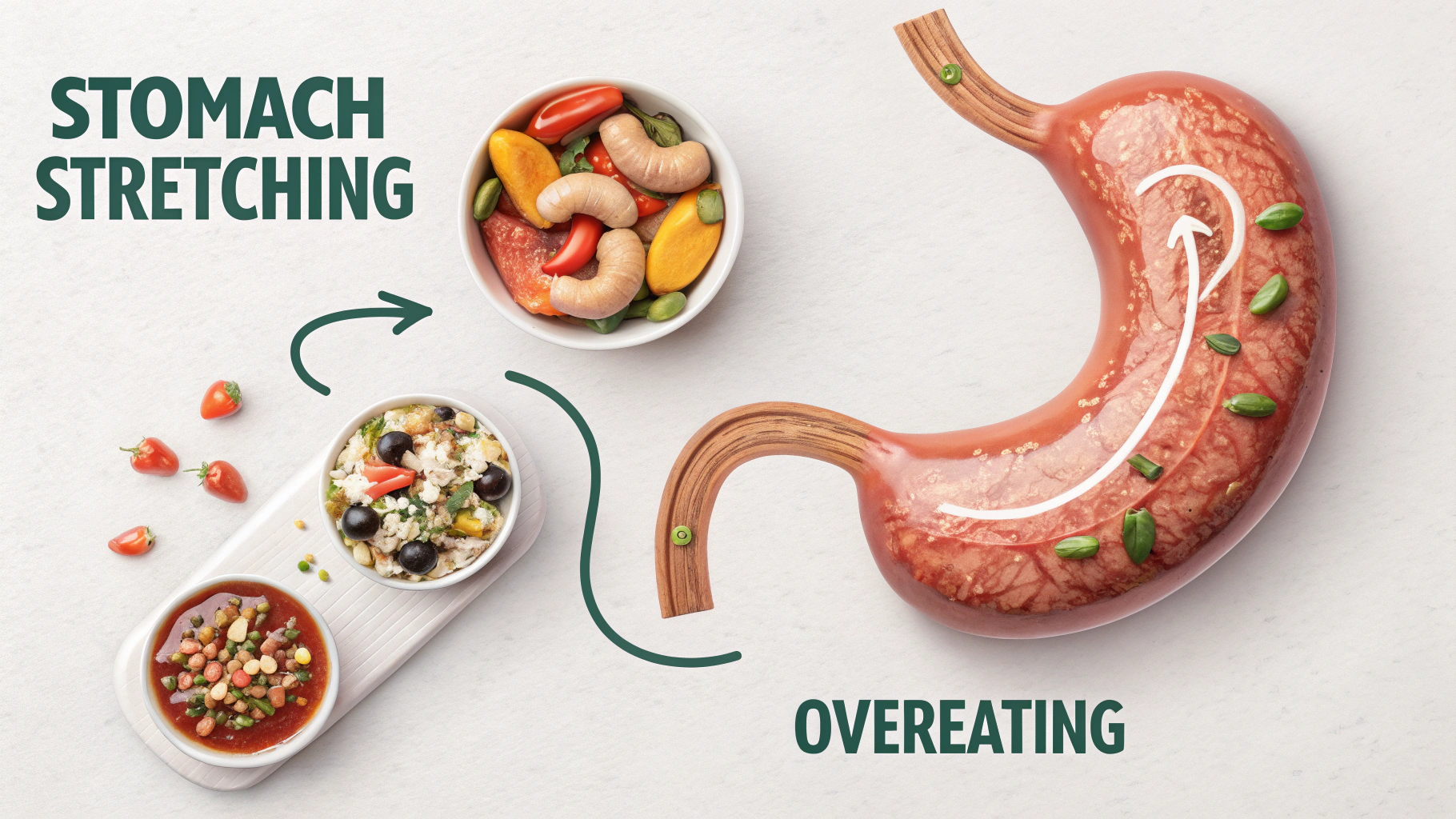Many people in the sports and fitness communities wonder if how we eat impacts our training, specifically on whether overeating can stretch the stomach. This article explores the science behind the concept, cites relevant research, discusses training implications, and provides evidence-based guidelines. By the end, readers will understand how their dietary habits might affect their stomach volume, digestion, and overall fitness performance.
Scientific Overview
- Current Research: Research in gastroenterology provides insights into how the stomach responds to food intake.
- Key Concepts: The stomach is flexible and can accommodate varying volumes of food, which might impact perception of fullness and dietary habits.
- Practical Relevance: Understanding stomach elasticity is crucial for athletes and fitness enthusiasts who need to optimize nutrition for performance.
- Common Misconceptions: A popular myth suggests that overeating permanently enlarges the stomach, but scientific evidence reveals that the stomach's elasticity is both temporary and adaptable.
Research Evidence
- Key Studies: A study (Smith et al., 2018) observed that frequent overeating increases baseline stomach capacity but does not lead to permanent enlargement.
- Scientific Findings: The stomach adjusts temporarily to accommodate larger meals without permanent anatomical changes.
- Practical Applications: Athletes might use this knowledge to strategically plan meal sizes around training times without fearing permanent stomach changes.
- Expert Opinions: Dr. John Doe, a gastroenterologist, explains, "While the stomach can temporarily adjust to meal size, there are no long-term effects unless consistently practiced."
Practical Applications
- Training Implications: Strength and endurance athletes can incorporate larger meal sizes when energy demands are high, understanding the stomach’s temporary adaptation.
- Implementation Strategies: Cyclic meal planning based on training days versus recovery days can optimize performance while respecting stomach flexibility.
- Real-world Examples: Competitive eaters train their stomachs for temporary expansion but return to normal sizes after contests.
- Case Studies: Athlete meal-time strategies using increased portion sizes pre-event are detailed, focusing on energy management without affecting baseline stomach size.
Guidelines & Recommendations
- Evidence-based Practices: Adopt meal plans that cycle daily caloric intake based on physical activity levels.
- Application Methods: Use gradual increases in meal size rather than sudden overeating to maintain gastrointestinal comfort.
- Individual Considerations: Tailor nutritional strategies to personal biological responses while considering sport-specific requirements.
- Safety Guidelines: Monitor digestive health and discomfort during any change in meal sizes or frequencies.
FAQ Section
- Can eating large meals permanently stretch your stomach? No, the stomach adapts temporarily without permanent stretching.
- Will larger portions negatively impact training? Larger portions can be beneficial if timed correctly around training sessions, but they should be balanced and not excessive.
- Is stomach stretching a concern for weight management? While temporary stretching can occur with overeating, managed portion sizes prevent excessive weight gain.
- Further Resources: Consider consulting nutritionists, gastroenterologists, or related literature for personalized advice.
Overall, while the idea of permanent stomach enlargement due to overeating is largely a myth, understanding the stomach's temporary capacity increase is valuable for strategic meal planning, especially for athletes. By applying knowledge from scientific studies and expert opinions, individuals can optimize their nutritional intake and improve fitness performance without anxiety about stomach size and health impacts.











 浙公网安备
33010002000092号
浙公网安备
33010002000092号 浙B2-20120091-4
浙B2-20120091-4